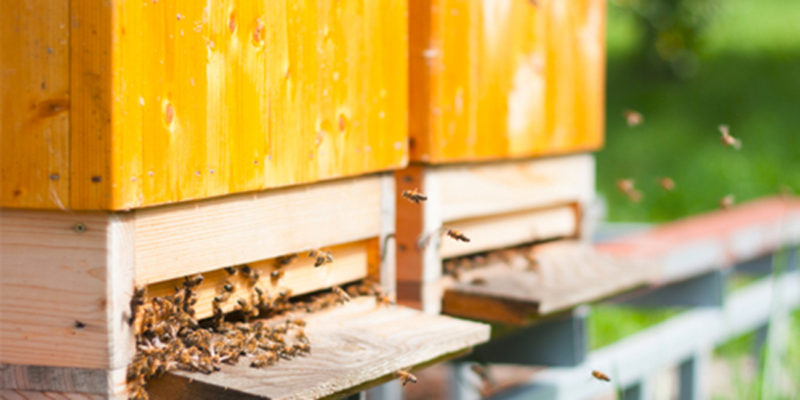Advise: Why feed?
Just as hunger harms a bee population, a plentiful bee feed offer tailored to the animals needs improves and saves a vital bee population.
A bee colony should never suffer from a shortage of food. If the population’s supply approaches the 5 kg mark (two full DNs or Zander honeycombs) and the outside nectar flow diminishes, they are already beginning to be undersupplied. The colony responds with emergency measures even before the food is gone:
limiting brood activity, less cleaning activities and less pollen collection; brood cannibalism can also result. The colony tries to survive by robbing others. If the food supply is completely consumed, the bees will sit trembling or motionless on the honeycombs; the first few bees will die, and the entire colony will be dead within a few hours. Typical symptoms of starvation:
- bees with their heads stuck in the empty cells
- hive bottom covered with thousands of dead bees
The beekeeper’s first responsibility is to recognize insufficient natural nectar flow and counteract under-feeding in a timely manner. Incidentally, far more bee colonies are dying of starvation than expected. This must not be the case.
Estimating food supply using the Liebefeld Method
For this method, use household rubber bands to divide an empty frame into eight equal squares. When you hold this structure over the honeycomb to be tested, you should see the following results:
One-eighth of a capped honeycomb side contains:
| frame type | bee food |
|---|---|
| DN | 111 g |
| Zander | 125 g |
| Langstroth | 140 g |
| Dadant | 175 g |
Example:
A Zander honeycomb with 8 fully capped food squares on one side, 4 capped squares on the other side,
Add up to: 8 + 4 x 125 g = 1500 g of food on this honeycomb. Half-squares are also counted.
One full capped honeycomb produces 16 squares = 2000 g.
ambrosia® bee experts will assist you in any question re bee food.
Get more information here:
We gladly answer your questions and recommend a specialized local retailer.


